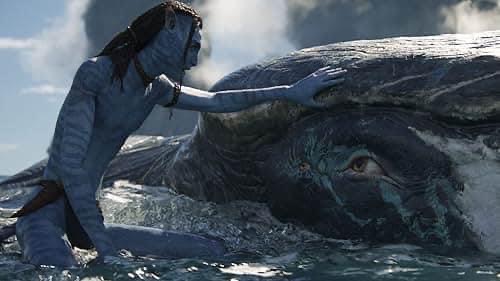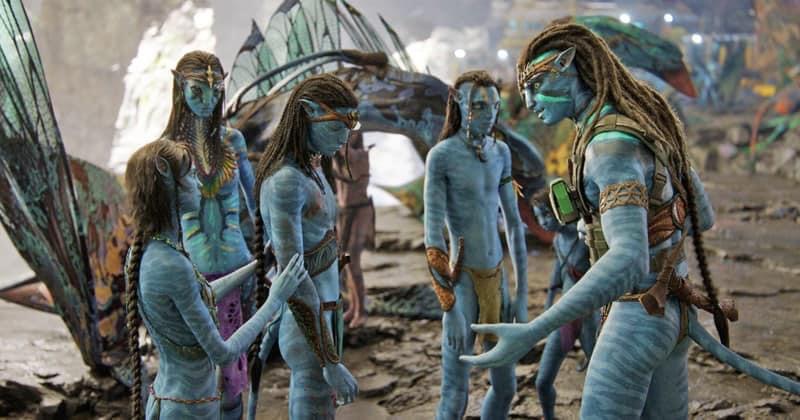Avatar: The Way of Water (2022)

“Avatar: The Way of Water” (2022), directed by James Cameron, serves as a long-awaited sequel to the 2009 hit Avatar. This visually stunning film delves deeper into the rich world of Pandora, with a particular focus on its aquatic environments, while expanding on the story of Jake Sully (Sam Worthington), Neytiri (Zoe Saldaña), and their family.
Suggested videos for you:
Suggested videos for you:
Suggested videos for you:
Plot Summary:
Set more than a decade after the events of the first Avatar, Jake Sully and Neytiri have built a family and continue to lead the Na’vi in their fight to protect Pandora from external threats. However, their peace is disrupted when human forces, particularly a resurrected Colonel Quaritch (Stephen Lang), return to Pandora with new technological advancements. To protect their loved ones, Jake and Neytiri flee to the Metkayina clan, a water-dwelling Na’vi group, where they must learn the ways of the ocean.
Visuals and Technology:
One of the most celebrated aspects of The Way of Water is its groundbreaking visuals. The film showcases breathtaking underwater scenes, with stunning CGI that pushes the boundaries of film technology. Cameron’s mastery of motion-capture technology, particularly for underwater performances, is a technical marvel that elevates the viewing experience. The lush, bioluminescent oceans and intricate alien ecosystems have been universally praised for their immersive quality.
Critics have highlighted the unparalleled visual world-building as one of the film’s biggest strengths. The attention to detail in creating Pandora’s aquatic environments adds depth to the planet’s lore, making the world feel alive and expansive. According to The Hollywood Reporter, the film is “a breathtakingly beautiful, and exhilarating technical achievement” .
Themes and Emotional Depth:
Beyond the stunning visuals, The Way of Water explores themes of family, survival, and the bond between humans and nature. Jake and Neytiri’s struggles as parents provide a more intimate emotional core than the original, adding layers of personal conflict alongside the epic battle sequences. Themes of environmental protection and the exploitation of natural resources—central to the first Avatar—continue to resonate throughout this sequel, with added emphasis on the symbiotic relationship between the Na’vi and their oceanic surroundings.
Criticism:
Despite its many strengths, the film received some criticism, primarily for its length and pacing. With a runtime of over three hours, some viewers and critics felt that certain sections, especially the slower moments dedicated to exploring the underwater world, could have been condensed. The Guardian described the film as “visually spectacular but narratively underwhelming,” suggesting that while the film is a technical triumph, it struggles to maintain narrative momentum .
Others pointed out that the character development, while improved from the first film, is still somewhat shallow. Although the family dynamic adds emotional stakes, some critics felt that many characters, particularly Neytiri, were sidelined to focus more on action and world-building .
Perèomances:
Sam Worthington and Zoe Saldaña deliver heartfelt performances, especially in portraying the protective nature of parents under duress. Newcomer Britain Dalton, who plays Jake and Neytiri’s son Lo’ak, stands out with a compelling arc as a rebellious teen grappling with his identity. Sigourney Weaver’s return, playing a new character (Kiri), also adds intrigue to the story, with her performance lauded for its versatility.
Conclusion:
Overall, Avatar: The Way of Water is a visually captivating and technically groundbreaking film that further cements James Cameron’s prowess as a filmmaker. While it may falter in pacing and depth at times, the movie’s stunning visuals, powerful themes, and emotional core offer a mesmerizing cinematic experience. Fans of the original will appreciate the expanded world-building and new exploration of Pandora’s oceans, though the film’s epic scale may not fully satisfy all viewers.











